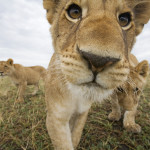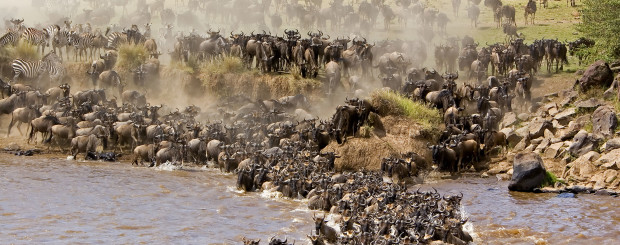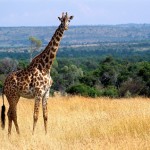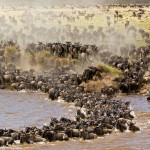Masai Mara Game Reserve
Masai Mara Game Reserve
Bird watching
The Masai Mara Game Reserve is a great place for bird watching enthusiasts, with 485 species of birds recorded in the area. some of these birds include the Crowned Crane, Marabou Stork, Wattled Plover, Black Bastard, White Headed Vulture, Jackson’s Weaver-bird, Ostrich, Tawny Eagle, Nubian Vulture, Lilac Breasted Roller and the Superb StarlingHot Air Ballooning
For a completely different perspective of the game, try a balloon safari. From your lofty viewpoint up in the sky (usually around 100m high), you have a fantastic view of the plains below, and the animals that inhabit it.Night Game Drives
It is totally different to a day time safari where you see animals like Lion, Elephant, hippos out of water, Dik-Dik, Bat Eared Fox, Scrub Hare, the strange Spring Hare which looks like a kangaroo when it jumps, Impala, Thomson’s Gazelle, a large herd of Giraffe including six or so babies, lots of hyenas, jackals, Topi and Wildebeest.Exceptional Lion sightings qt Masai Mara Game Reserve
Masai Mara Game Reserve’s black-maned lions are reputed to be the largest and most impressive in Africa, and have been the subject of numerous books and documentary films.The Masai Mara Game Reserve is one of the best known and most popular reserves in the whole of Africa. It is Kenya’s finest wildlife reserve. Everything about Masai Mara Game Reserve is outstanding. Seasoned safari travelers, travel writers, documentary makers and researchers often admit that the Masai Mara is one of their favorite places. So why is that? Perhaps it is because of the ‘big skies’, the open savanna’s, the romance of films like ‘Out of Africa’ and certainly because of the annual wildebeest migration, the density of game, the variety of bird life and the chance of a hot air balloon ride.
South Western Kenya is the heartland of the Masai. The Masai are strongly independent people who still value tradition and ritual as an integral part of their everyday lives. They regard themselves not just as residents of this area but that they are as much a part of the life of the land as the land is part of their lives.
Traditionally, the Masai rarely hunt and living alongside wildlife in harmony is an important part of their beliefs. This unique co-existence of man and wildlife makes this Masai land one of the world’s most unique wilderness regions.
At the heart of these lands is the Masai Mara Game Reserve, widely considered to be Africa’s greatest wildlife reserve. The Masai Mara Game Reserve comprises of 200 sq miles of open plains, woodlands and riverine forest. Contiguous with the plains of the Serengeti, the Mara is home to a breathtaking array of life. The vast grassland plains are scattered with herds of Zebra, Giraffe, Gazelle, and Topi.
The Acacia forests abound with Bird life and Monkeys. Elephants and Buffalo wallow in the wide Musiara Swamp. The Mara and Talek rivers are brimming with Hippos and Crocodiles. Each year the Masai Mara Game Reserve plays host to the world’s greatest natural spectacle, the Great Wildebeest Migration from the Serengeti.
From July to October, the promise of rain and fresh life giving grass in the north brings more than 1.3 million Wildebeest together into a single massive herd. They pour across the border into the Mara, making a spectacular entrance in a surging column of life that stretches from horizon to horizon. At the Mara River they mass together on the banks before finally plunging forward through the raging waters, creating frenzy as they fight against swift currents and waiting crocodiles. The wildebeest bring new life to the Mara, not just through their cycle of regeneration of the grasslands, but for the predators that follow the herds.
The Mara has been called the Kingdom of Lions and these regal and powerful hunters dominate these grasslands. Cheetah are also a common sight in the Masai Mara Game Reserve, as are Hyena and smaller predators such as Jackals. The Mara is an awesome natural wonder, a place where Maasai warriors share the plains with hunting lions, a place of mighty herds and timeless cycles of life, death and regeneration.
Animals & Birds of Masai Mara Game Reserve
Wildebeest, zebra and Thomson’s gazelle migrate into and occupy the Mara reserve from the Serengeti plains to the south and Loita plains in the pastoral ranches to the north-east from July to October or later. Herds of all three species are also resident in the reserve.All members of the “Big Five” are found in the Masai Mara, although the population of black rhinoceros is severely threatened, with a population of only 37 recorded in 2000. Hippopotami are found in large groups in the Masai Mara and Talek rivers. Cheetah are also found, although their numbers. The wildebeest are the dominant inhabitants of the Masai Mara, and their numbers are estimated in the millions. Around July of each year these ungainly animals migrate in a vast ensemble north from the Serengeti plains in search of fresh pasture, and return to the south around October. The Great Migration is one of the most impressive natural events worldwide, involving an immensity of herbivores some 1,300,000 wildebeests, 360,000 Thomson’s gazelles, and 191,000 zebras. These numerous migrants are followed along their annual, circular route by a block of hungry predators, most notably lions and hyena.
Numerous other antelopes can be found, including Thomson’s and Grant’s Gazelles, Impalas, Topis and Coke’s Hartebeests. Large herds of zebra are found through the reserve. The plains are also home to the distinctive Masai giraffe. The large Roan antelope and the nocturnal bat-eared fox, rarely present elsewhere in Kenya, can be seen within the reserve borders. The Masai Mara is a major research center for the spotted hyena. Additionally, over 450 species of bird life have been identified in the park, including vultures, marabou storks, secretary birds, horn-bills, crowned cranes, ostriches, long-crested Eagles, and African pygmy-falcons.
The Mara birds come in every size and color including common but beautiful ones like the lilac breasted roller and plenty of large species like eagles, vultures and storks. There are 53 different birds .
Masai Mara Game Reserve Seasons
Altitude is (4,875 — 7,052 feet) (1,500 — 2,170 meters) above sea level, which yields a climate somewhat milder and damper than other regions. The daytime rarely exceeds 85°F (30°C) during the day and hardly ever drops below 60°F (15°C) at night.Rainy Season
It rains in April and May and again November and this can cause some areas of the Mara to be inaccessible due to the sticky ‘black cotton’ mud.Dry Season
July to October is dry and the grass is long and lush after the rains.
This is a good time to come and see the huge herds of migratory herbivores.Hottest time
The warmest time of year is December and January.Coldest Time
June and July are the coldest months.-
“http://,hanseltravel.com/wp-content/uploads/2016/03/Mara-game-reserve-2.jpg” rel=”attachment wp-att-4573″>
 “]
“] HOW DO I/WE BOOK OUR CHOSEN SAFARI THROUGH YOUR
COMPANY?Please complete our Online Inquiry Form at the bottom of
this page or simply send us an email at
info@hanseltravel.com.
HOW DO I PAY, WHEN AND HOW MUCH DEPOSIT?
We require
30% deposit to confirm a booking, sent by wire transfer to our bank
account, and balance is payable at least 14 days prior to commencement
of the safari. See our term & conditions for further
information.
HOW FAR IN ADVANCE SHOULD I BOOK MY SAFARI?
It is
better to book as far in advance as possible to ensure availability at
the time you wish to travel, especially during the high/peak seasons –
June to Oct and Christmas/New Year season.
WHAT TYPE OF VEHICLES DO YOU USE ON SAFARI?
We use
7-seater custom safari minibuses with pop-up roof ideal for game
viewing and sight seeing. The buses are fitted with HF long range
radios for easy communication and are well maintained to provide
maximum level of comfort and safety. In addition to the above, all our
vehicles are fully equipped with cool-boxes and first aid kits.
All our safari drivers are trained tour guides, friendly, experienced,
knowledgeable and are committed to ensuring clients’ satisfaction.
Past clients testimonials confirm this.
HOW MANY PEOPLE DO YOU TAKE ON A SAFARI?
Most of our
safaris operate on private basis with a minimum of two persons
booking, and we recommend not more than 6 persons for maximum comfort
and guaranteed window seats.
ARE WE GUARANTEED TO SEE THE ‘BIG FIVE’?
We cannot
guarantee this, as all of the animals are in their natural
environment. However, with our well though-out itineraries and chosen
locations you will not be disappointed.
[nwm_map id=”26 “]
You will carry this experience with you forever. With
that knowledge we are always hard at work to ensure that you carry
only positives: we work on pricing to keep it competitive; we offer
advice to ensure you have the best holiday due to insider knowledge;
we work with the best hotels so as to ensure the safari is exploratory
and relaxing. Let us plan your next adventure.
Work with us because
- • We want to give you the best safari
- • We have done this for 10 years
- • We have contacts all over Africa
- • We get the best rates at hotels
- • We have a bunch of happy customers



